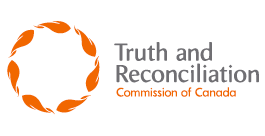
My response to the Truth and Reconciliation Commission of Canada.
Call to Action 62: Make age-appropriate curriculum on residential schools, Treaties and Aboriginal peoples’ historical and contemporary contributions to Canada, a mandatory education requirement for Kindergarten to Grade 12 students.
Where Eurocentric views of the world primarily focus on economic progress whereas Indigenous worldviews see balance and harmony with our surroundings (water, animals, land) as being of primary importance.
To help reconcile Canada’s horrific treatment of indigenous people and their culture and traditions I will make indigenous teachings central to my teaching practice. Addressing the TRC Call to Action 62 requires a concerted effort by all educators.
Here’s how I plan to contribute to reconciliation in my classroom:
1. Elder and Knowledge Keeper visits:
Inviting indigenous elders and knowledge keepers into my classroom to share experiences and wisdom with students will be an important part of my annual planning.
2. Student Research Projects:
Having students research news articles relating to indigenous issues such as land treaties, corporate infringement of traditional lands, infrastructure projects impacting on sacred sites (ex. highway construction near burial sites of the Secwepemc, dam construction which submerged archeological sites of the Sinixt) will help students understand the dynamics surrounding this issues which are often framed by media in a negative light.
3. Indigenous books and literature in my class:
I will include a wide variety of books relating to the indigenous experience in my classroom. This list includes both picture books and chapter books I could read to the class:
eg. Fatty Legs, Stolen Words, Secret of the Dance, A Stranger at Home, When We Were Alone, Stand Like a Cedar, When I Was Eight, We Are Water Protectors, River of Salmon People, As Long as the River Flows, You Hold me Up, The Elders are Watching, Not My Girl, Shi-shi-etko, A Day with Yayah, Hiawatha and the Peacemaker, In My Anaana’s Amautik, I Am Not A Number, The Moccasins, Taan’s Moons, I Lost My Talk, Shin-chi’s Canoe, The Sockeye Mother, They Called Me Number One, All Creation Represented, Owls See Clearly At Night, Go Show the World, My Heart Fills with Happiness, The Orange Shirt Story, Una Huna? What is This?, Sharing Our World, Sweetest Kulu, Seven Grandfather Teachings, Indigenous Peoples of Canada, 21 Thiings You May Not Know About the Indian Act, Claire and her Grandfather, Whale in the Syk, Coyote Tales, Indian Horse, Nokum Is My Teacher and others.
If I begin working at a school missing these titles in the library I will suggest they be added as one of my first “To Dos”. Many of these books will be part of my permanent classroom collection for use in all types of reading activities and projects, for story times, for book related projects, and to initiate discussions about indigenous culture and both positive and negative aspects of Canadians history.
4. Placed Based Learning:
I will venture to include field trips to learn about important local indigenous places in my annual planning. These PBL lessons will also include, when approriate, visits to the Secwepemc Museum and Heritage Park so students can see artifacts and experience indigenous history including impacts of residential schools first-hand.
Lesson example:
A specific lesson I implement for a grade 3-5 age range is the Beads of Time. This lesson is an excellent way to clearly illustrate how long indigenous peoples had lived in harmony with the environment on Turtle Island before the arrival of European settlers. The lesson involves the class collectively beading a long string of large wooden beads. Each bead represents 25yrs, so 4 beads represent 100yrs. The original ancestors of indigenous people migrated from present day Siberia and have been in North America for 11,300 years (Forster et al, 1996, p.936). By contrast European settlers only first began arriving in North America approximately 500 years ago (Koch et al, 2019, p.13).
Represented visually on the string of large beads this equates to 452 beads (spanning almost the length of the class) representing the timeframe indigenous peoples have been in North America. By contrast only 20 beads represent the timeframe European settlers have been in North America. This lesson will very clearly illustrate the breadth of time indigenous peoples have lived on this lands. It will also be an effective way to engage students in indigenous history and spark conversations about how rooted indigenous knowledge is to this place we live.
References
Forster, et al. (1996). Origin and evolution of Native American mtDNA variation: a reappraisal. American journal of human genetics, 59(4), 935–945. Retreived from: https://www.ncbi.nlm.nih.gov/pmc/articles/PMC1914796/
Koch, et al. (2019). Earth system impacts of the European arrival and Great Dying in the Americas after 1492. Quaternary Science Reviews, 207, 13-36. Retrieved from: https://reader.elsevier.com/reader/sd/pii/S0277379118307261?token=82D1DE33C4886519440ABBE8DC35E9D4FB82270A599AE51ABF4C03B64750E2A9426C38BB231EAD8EF2898EB0B9E8440B